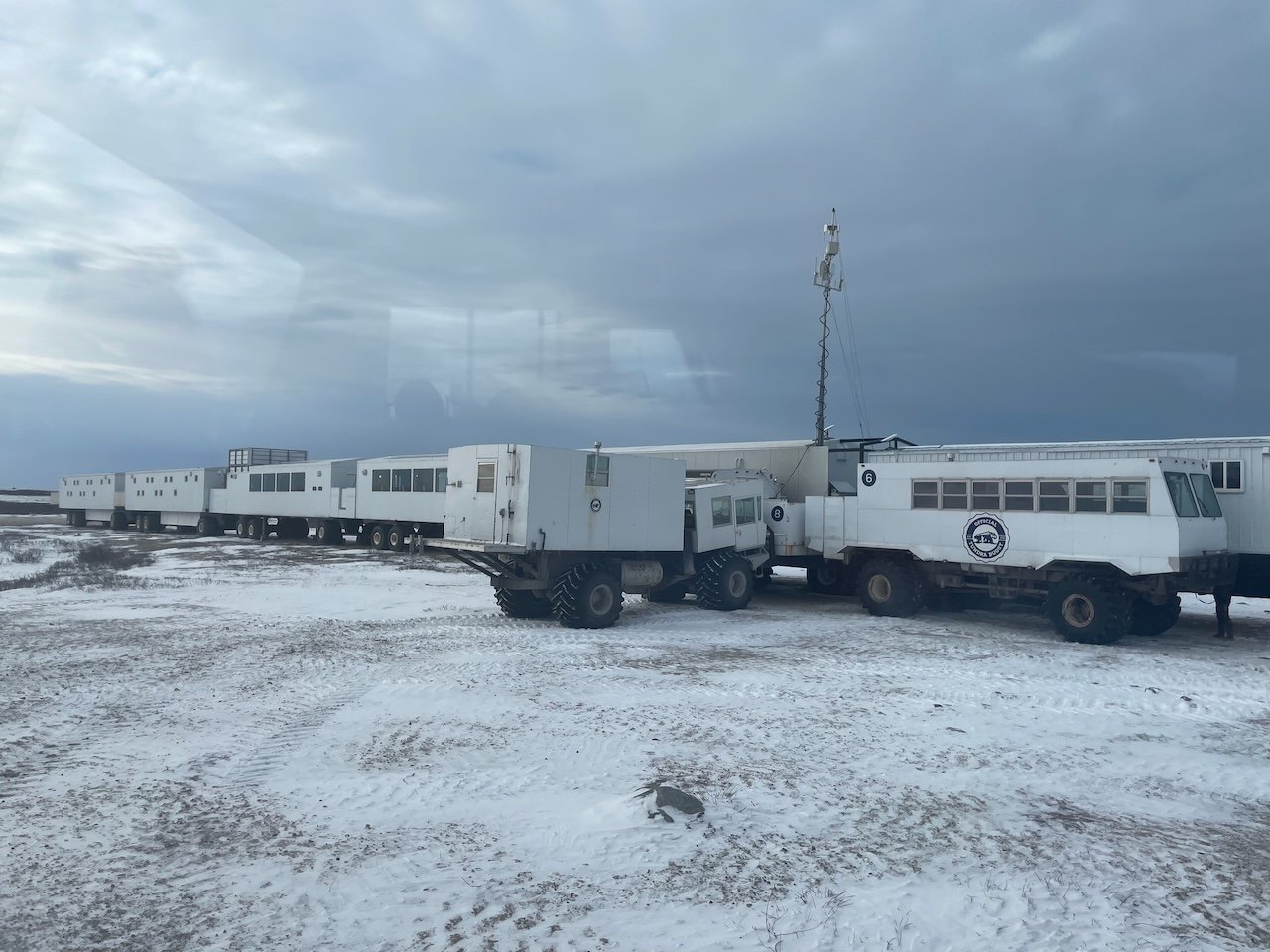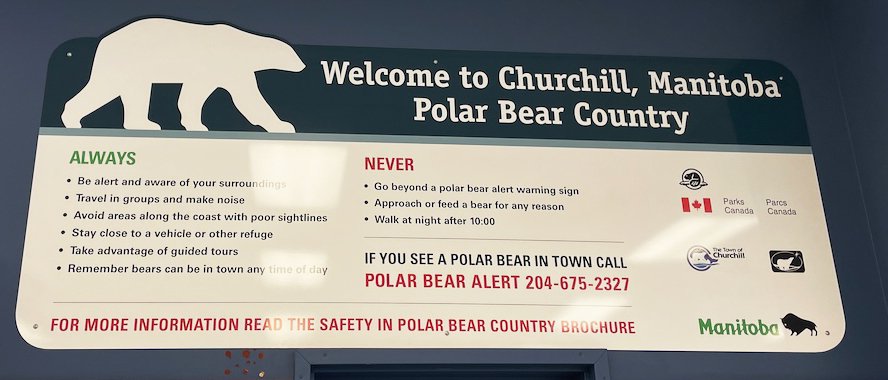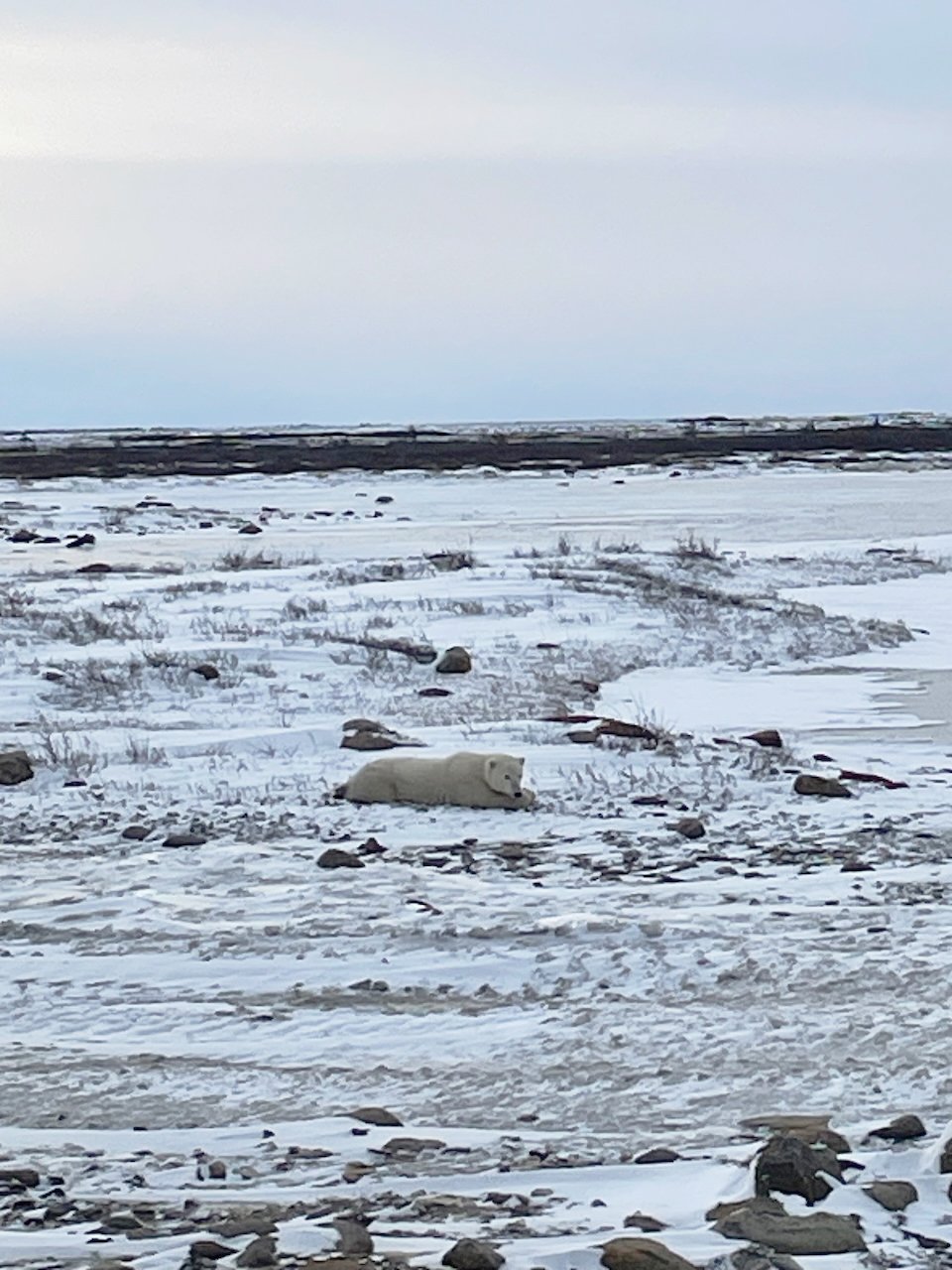The tundra buggy parked parallel to Hudson Bay offering each traveller an unspoiled view of this Arctic vista, made even more special by the fact that a mother polar bear was passing by with her two young cubs. Everyone on board remained silent, not wanting to draw fear–or ire–from them. The only sound audible was the steady click of a camera lens. I tried to take everything in, marvelling at the beauty and wonder of nature laid before me in what started as a feeling of being overwhelmed by it but then evolved to sadness at how the passing of time (and climate change) would alter it in the future. Thought of the hardship these majestic creatures face, including their potential extinction, left me misty-eyed. What will the Arctic look like in one hundred years? I felt very blessed to see it now.
You may wonder how the world’s largest land predator could sneak up on anything, but on the tundra they are cloaked perfectly by their surroundings. It is only until you observe the slightest of movement that you realize the rock in front of you is actually a polar bear curled in slumber. And that is what the mother bear and her two curious and playful cubs encountered next (and for the remainder of our excursion).
Sensing a potential threat in the immediate vicinity, the mother bear paused and stood on her hind legs sniffing at the air as the cubs continued to frolic unaware. Within a few minutes, she hurriedly turned around nudging her cubs to follow, which they did diligently. A large male bear who, up until then, had been asleep a couple dozen yards away twitched and also scoped the immediate area. The mood on the tundra buggy noticeably shifted as we were reminded that we are in the wild and these were wild animals; in nature, male polar bears may attack and kill cubs for sustenance or to mate with the mother, thus securing their own line of succession.
Can you spot the bear in this photo? (©2024, Deborah Clague).
As the mother bear and her cubs escaped, the large male returned to slumber and our tundra buggy driver decided upon another location for us to enjoy lunch.
Not too far away, another large male polar bear was lounging in the snow. We parked next to it and I enjoyed a delicious roast beef sandwich with warm soup, thinking to myself “how many people can say they dined with an actual polar bear?” Now I, for one, could! When not actively hunting or in pursuit, these creatures are actually quite lazy, spending most of their day conserving energy for when it counts. This unfazed bear stayed next to us for an hour as we ate. In a few day’s time, once Hudson Bay was frozen over and his long seasonal trek across it would begin, his life would be much different.
My lunch date, Churchill, Manitoba (©2024, Deborah Clague).
Looping around Polar Bear Point, we again came across the mother bear with her two cubs. It appeared she was trying to take her family north but a gauntlet of male polar bears inhibited her progress including one who gave chase before seeming to give up and turn away. We then watched her turn west, crossing the curiously named “No Pants Lake”. As it was almost time to head back for the day, the setting and light offered one last chance to preserve our memory. I made my way to the open deck of the tundra buggy for a clearer shot. It was getting quite cold and few other travellers joined me, save for an older gentleman with a set of binoculars.
“There’s another bear stalking her” he said to me.
“Where?” I asked, while squinting to see where it was. The man handed me his binoculars and pointed to a ridge of tall grass on the opposite side of the lake. Sure enough, if you looked ever so closely, there was a cream-coloured shape stealthily moving towards the mother bear and her cubs. She would get no rest today.
The mother bear seemed to know that the tundra buggies might provide safety and she headed directly our way with the male bear in pursuit, now completely visible as they all made their way across the frozen lake. Once covered by us, she darted into the tall grass terrain herself and seemingly disappeared. In comparison, the male bear took time to investigate the tundra buggies offering the day’s most up-close and personal view of their stature and strength. It was an unforgettable moment to end an unforgettable day.
The mother bear and her cubs cross No Pants Lake (©2024, Deborah Clague).
An up close and personal polar bear encounter in Churchill, Manitoba (©2024, Deborah Clague).
Polar Bear Point, Churchill, Manitoba (©2024, Deborah Clague).
At Hudson Bay, Churchill, Manitoba (©2024, Deborah Clague).






















